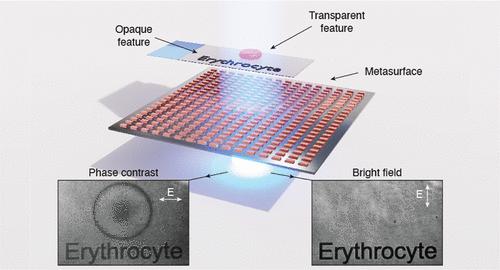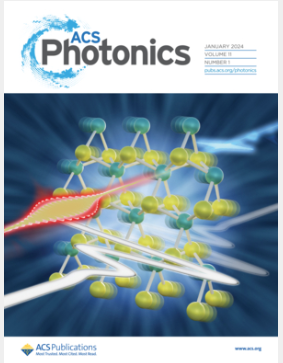Metasurfaces for Infrared Multimodal Microscopy: Phase Contrast and Bright Field
IF 6.7
1区 物理与天体物理
Q1 MATERIALS SCIENCE, MULTIDISCIPLINARY
引用次数: 0
Abstract
Different imaging modalities are used to visualize the diverse information carried in an optical field. Two prominent non-computational modalities include bright field and phase contrast microscopy that can create contrast in an image related to the amplitude and phase features of a sample, respectively. Often, the size and cost of the equipment typically required for these applications, such as bulky microscopes, can limit their availability to well-equipped laboratories. Furthermore, capturing both of the phase contrast and bright field images on the same camera in a microscope typically requires interchanging optical components. Metasurfaces are ultra-thin nanostructures that can merge both of these operations into a single miniaturized device in the push toward shrinking the size of imaging systems. Here, a silicon-based metasurface that supports a Mie resonance is demonstrated to perform non-computational, near-infrared phase contrast and bright field multimodal microscopy that can be tuned by changing the polarization of the illumination. We performed experiments using optical fields with phase variations synthesized by a spatial light modulator and introduced by propagation through semi-transparent samples, including C. elegans, unstained human prostate cancer cells, and breast tissue. The results demonstrate the potential of metasurfaces to be used in miniaturized optical systems for label-free point-of-care testing beyond the laboratory.

红外多模态显微镜的超表面:相衬和亮场
不同的成像方式用于可视化光场中携带的不同信息。两种突出的非计算方式包括明场和相对比显微镜,它们可以分别在与样品的振幅和相位特征相关的图像中创建对比度。通常,这些应用通常需要的设备的尺寸和成本,如笨重的显微镜,限制了它们在设备齐全的实验室的可用性。此外,在显微镜中捕获相同相机上的相衬和亮场图像通常需要互换光学元件。超表面是一种超薄的纳米结构,可以将这两种操作合并到一个小型化的设备中,以缩小成像系统的尺寸。在这里,一个硅基的超表面,支持米氏共振被证明执行非计算,近红外相对比和亮场多模态显微镜,可以通过改变照明的偏振来调谐。我们使用空间光调制器合成的相位变化的光场进行实验,并通过传播引入半透明样品,包括秀丽隐杆线虫,未染色的人前列腺癌细胞和乳腺组织。结果表明,超表面的潜力,用于微型光学系统的无标签护理点测试超出了实验室。
本文章由计算机程序翻译,如有差异,请以英文原文为准。
求助全文
约1分钟内获得全文
求助全文
来源期刊

ACS Photonics
NANOSCIENCE & NANOTECHNOLOGY-MATERIALS SCIENCE, MULTIDISCIPLINARY
CiteScore
11.90
自引率
5.70%
发文量
438
审稿时长
2.3 months
期刊介绍:
Published as soon as accepted and summarized in monthly issues, ACS Photonics will publish Research Articles, Letters, Perspectives, and Reviews, to encompass the full scope of published research in this field.
 求助内容:
求助内容: 应助结果提醒方式:
应助结果提醒方式:


